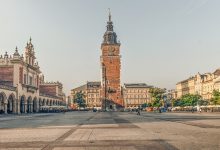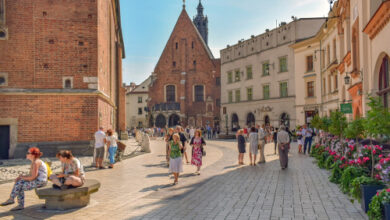Oskar Schindler was a German industrialist born on 28 April 1908 in Svitavy, Moravia, which is now part of the Czech Republic. As a member of the Nazi Party, his actions during the Second World War stand in stark contrast to the regime’s atrocities.
While the Nazis perpetrated horrific crimes against humanity, Schindler showed a remarkable spirit of courage and humanitarianism.
His work to save the lives of more than 1,200 Jews by employing them in his enamelware and munitions factories demonstrated an exceptional defiance of the prevailing inhumanity.

Despite being a Sudeten German and an opportunistic businessman, Schindler’s moral compass led him to take extraordinary risks. Your understanding of him may be shaped by his Catholic upbringing and the complex societal pressures of the time, but it was his determination and resourcefulness that enabled him to protect his Jewish workers from certain death at concentration camps.
By leveraging his war-time factories in occupied Poland and the Protectorate of Bohemia and Moravia, he provided his workers with a semblance of safety amidst the chaos of war.
What you will find intriguing about Schindler’s character is the transformation from an ambitious entrepreneur to a recognisable saviour of hundreds.
His list, often referred to as “Schindler’s List,” became a powerful symbol of life amidst the Holocaust’s widespread destruction. Schindler’s actions have since positioned him as a symbol of altruism and moral courage, earning him honours such as the title of Righteous Among the Nations by Yad Vashem in Israel for his efforts to save Jewish lives during one of history’s darkest periods.
Table of Contents:
Oskar Schindler Early Life and Personal Background
In exploring Oskar Schindler’s early life, you’ll discover his roots in a German Catholic family and his initial foray into business before the second world war.
This section delves into Schindler’s family background and education, alongside his early business ventures, which set the stage for his later wartime actions.
Family and Education
Oskar Schindler was born on 28 April 1908 in Svitavy, Moravia, which was then part of Austria-Hungary and is now in the Czech Republic. He hailed from an ethnic German family that was part of the Sudeten German community.
Raised in a Catholic household, Schindler’s upbringing in the Sudetenland was pivotal to shaping his cultural and social outlook.
In terms of education, Schindler attended several trade schools, which equipped him with the knowledge necessary to engage in business and industry. The skills he gained from these institutions would prove crucial in his later entrepreneurial endeavours.
Business Ventures Pre-War
Before the outbreak of World War II, Schindler took an active role in various business pursuits. He worked for his father’s farm machinery company, gaining experience in the dynamics of running a factory.
His keen sense for profit and enterprise led him to various other ventures, often located within the fluctuating borders of Czechoslovakia and the Sudetenland. These early engagements laid the foundation for his adept handling of businesses, which was a skill he would later employ to a more humanitarian end.
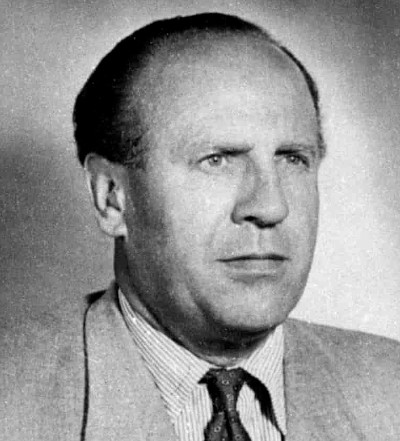
Involvement in the Nazi Party
Oskar Schindler, a German industrialist, became known for his role in the Nazi Party during World War II. Understanding of his complex affiliations and activities is crucial, from joining the political scene to his wartime actions that would later save lives.

Joining the Nazi Party
Schindler joined the Nazi Party in 1935, initially seeking the economic opportunities that came with the party’s rise in Germany.
He was also a member of the Sudeten German Party (SdP), which aligned with Nazi ideologies and played a role in the party’s politics.
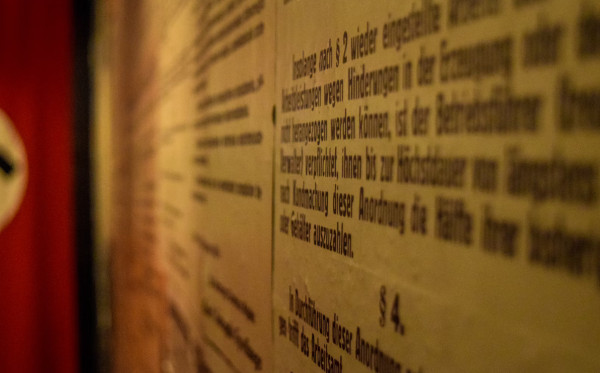
Schindler’s Transition
As a known opportunist, Schindler’s motivations for joining the Nazis were driven by potential personal gain. However, your perception of Schindler may shift as you learn that his views evolved over time, particularly as he witnessed the atrocities committed against the Jews.
Activities During World War II
During the war, Schindler engaged in intelligence gathering for the Abwehr, the German military intelligence agency.
After Nazis’ occupation of Poland Schindler take control of factories in Kraków, employing Jewish workers who were otherwise destined for concentration camps. Here, he demonstrated a complex blend of self-serving actions and humanitarian efforts.
Schindler’s Factory and Jewish Workforce
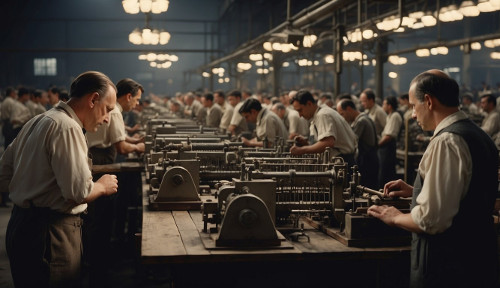
Your understanding of Oskar Schindler’s efforts during the Holocaust will deepen when you consider how he managed his factories and the Jewish workforce he employed. This complex operation was marked by Schindler’s strategic acquisition of a factory, the creation of relatively humane working conditions, and an expansion that helped save lives.
Read also:
Acquisition of Emalia
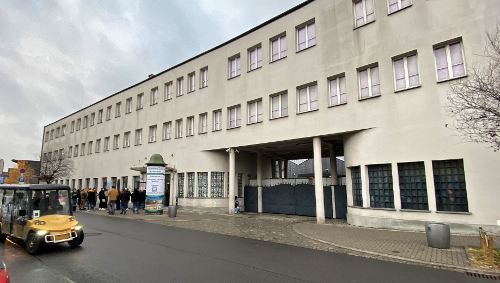
In November 1939, Oskar Schindler took over an enamelware factory in Kraków, Poland, which he formalised as Deutsche Emailwarenfabrik, commonly known as Emalia. Utilising the process of “Aryanisation” encouraged by the Nazi regime, he acquired Jewish-owned businesses at low prices.
This not only positioned him for financial gain but also set the stage for his later humanitarian efforts.
Working Conditions and Roles
At Emalia, Jews found a reprieve from the brutal conditions of the Plaszow concentration camp. The factory offered better treatment and roles that included manufacturing enamelware and later, ammunitions.
Under Schindler’s oversight, your Jewish counterparts were treated more fairly than in concentration camps, and Schindler’s influence with the SS helped to ensure this relative safety.
| Role in Factory | Responsibilities |
|---|---|
| Metalworkers | Making enamelware products |
| Administrative Staff | Day-to-day operations |
| Labourers | Manual work and factory maintenance |
Expansion of Operations
Schindler’s operations expanded to include the manufacturing of ammunitions in Brünnlitz. The move was not just a business endeavour but also a strategical one to protect his Jewish workforce from being sent back to concentration camps.
Through this expansion, he succeeded in keeping his workforce intact, providing them employment and preserving over 1,000 lives by the end of World War II.
Rescue Efforts During the Holocaust
Oskar Schindler played a crucial role during the Holocaust by saving the lives of Jews through his employment and protection strategies. His efforts resonated as a beacon of humanity amidst the horrors of the era.
List of Schindlerjuden
Schindler’s most significant contribution towards saving Jewish lives was the creation of a list, known informally as “Schindler’s List“. This was essentially a roster naming over 1,200 Jews whom Schindler employed in his enamelware and munitions factories.
These individuals, later known as Schindlerjuden, were diverted from the threat of deportation to concentration camps such as Plaszow and Auschwitz, and instead worked under Schindler’s increasingly protective oversight.
Bribes and Protection
To ensure the safety of his Jewish workers, Schindler engaged in extensive bribery and negotiation with SS officers and the Gestapo.
He leveraged his membership within the Nazi Party and connections in the black market to shield his employees from the fatal deportations faced by many others.
His factory, deemed as essential to the war effort, became a haven for his Jewish workers—as long as they remained on his list, they were protected.
Aftermath for Survivors
Post-war, the survivors, known collectively as Schindlerjuden, expressed their gratitude through testimonies and efforts to memorialize Schindler’s actions. Many found new homes across the world, with a significant number emigrating to Israel.
Oskar Schindler and his wife, Emilie Schindler, were recognized at Yad Vashem, Israel’s official memorial to the victims of the Holocaust, as Righteous Among the Nations for their lifesaving humanitarian efforts.
Life After the War
After World War II, Oskar Schindler faced a period of economic struggle, yet his actions during the war left a long-standing legacy, leading to commemoration for saving the lives of many Jews.
Post-War Challenges
Upon the war’s end, Schindler was recognised for his efforts but found himself penniless. Unlike during the war, he did not have the means to wield influence or maintain his previous standard of living.
Despite securing partial reimbursement for war expenses, his financial instability persisted. In 1949, Schindler, alongside his wife Emilie, migrated to Argentina with the hope of starting anew.
Within Argentina, Schindler attempted several business ventures, including farming, but these efforts did not lead to sustained success. The financial troubles took a toll, and by 1958, Schindler was separated from Emilie, having returned to Germany in search of better prospects.
Legacy and Commemoration
Schindler’s wartime deeds did not go unnoticed. In 1962, he was honoured by Yad Vashem in Israel as a Righteous Among the Nations for his actions during World War II that saved the lives of approximately 1,200 Jews.
This recognition is among the highest honours bestowed to non-Jews who risked their lives during the Holocaust to save Jews from extermination by the Nazis.
Toward the end of his life, Schindler resided in Germany. Although his business attempts post-war were largely unsuccessful, he was supported by donations from Jewish organisations and individuals whom he had helped during the war.
Oskar Schindler died on 9 October 1974 and was buried in the Catholic Cemetery on Mount Zion in Jerusalem, an honour reflecting the deep appreciation for his humanitarian efforts. His grave remains a notable site of remembrance and attracts many visitors annually.
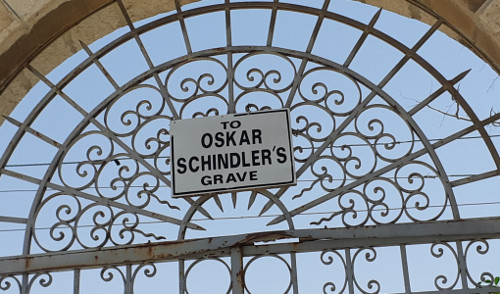
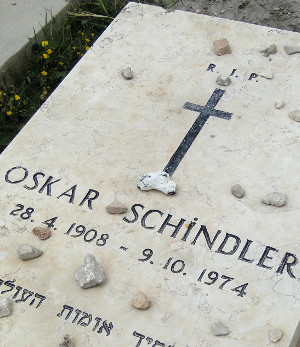
Cultural Impact of Oskar Schindler
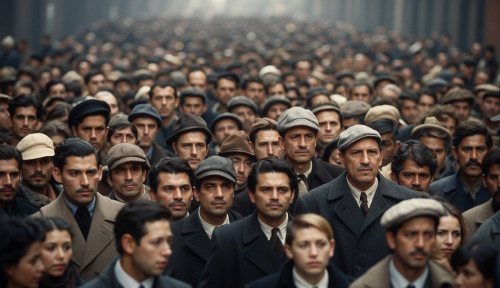
Oskar Schindler’s efforts during the Holocaust have been immortalised through notable works in literature and film. These adaptations have contributed significantly to public awareness of Schindler’s humanitarian efforts and provided cultural touchstones that have shaped perceptions of this historical period.
Thomas Keneally’s Novel
In 1982, Australian author Thomas Keneally published “Schindler’s Ark”, a novel based on the true story of Oskar Schindler. The book meticulously details how Schindler saved over a thousand Jewish lives by employing them in his factories during World War II.
Keneally’s work was a critical success, earning the Booker Prize for Fiction, and played a pivotal role in propelling Schindler’s story to global consciousness.
Spielberg’s Adaptation in Film
Following the novel’s success, director Steven Spielberg translated the story to the screen with the 1993 film, “Schindler’s List“. The portrayal of Schindler by actor Liam Neeson received widespread acclaim.
Spielberg’s adaptation was both a critical and commercial success, winning seven Academy Awards, including Best Picture. The film not only heightened awareness of Schindler’s heroism but also brought the terror of the Holocaust to a wider audience, cementing the narrative in popular culture.
Historical Debates
In analysing the life of Oskar Schindler, your understanding is enriched by exploring the contentious debates surrounding his motivations and the subsequent recognition he attained. These discussions delve deeper into why Schindler acted as he did during the Holocaust and how his actions have been interpreted historically.
Schindler’s Motivations
Oskar Schindler’s actions during World War II have been subject to extensive scrutiny. You may find in historical interpretations a polarised view of his character: some depict him as an opportunist who initially sought profit, while others stress his humanitarian efforts and courage.
It’s well-documented that Schindler, a German industrialist and member of the Nazi Party, initially took over factories in occupied Poland and employed Jewish workers.
However, it’s the transformation of his motivations that stir debate. Whether Schindler’s initial intention was to exploit for profit or he always possessed an underlying humanitarian drive is a question that has preoccupied historians.
His designation as a Righteous Gentile post-war suggests a recognition of his moral actions, though the extent to which he was driven by empathy from the outset remains a contested point.
Recognition as a Righteous Gentile
Recognition of Schindler’s heroism took a definitive shape when he was honoured as Righteous Among the Nations by Yad Vashem. This prestigious title is reserved for non-Jews who took great risks to save Jewish lives during the Holocaust.
Your awareness of the gravity of this title is important, as it formally counters claims of Schindler being solely an opportunist.
This honour reflects the belief that Schindler, a Catholic, showcased profound moral courage, thus shifting the historical lens away from his earlier profit-driven actions.
The title of Righteous Gentile bestowed upon him is significant; it underpins the narrative that he transcended the expectations of his German industrialist background to become a saviour of Jews, ultimately shaping his legacy in a positive light.

